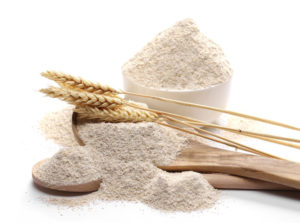Learning that you have coeliac disease can be disconcerting at first. It can be incredibly daunting to suddenly switch to a different diet including gluten free bread and other types of gluten free recipes. We’ll run through a few things in this post, providing tips on how to make the changes you need to make to live a healthier life.
What is coeliac disease?
First, let’s discuss why you might be looking at a gluten-free diet as your future. Coeliac disease is a lifelong autoimmune disease that is caused by your immune system reacting to gluten. Gluten is a protein found in barley, wheat, and rye, and the only way to manage and treat the condition is to follow a gluten free diet.
Learning to live with coeliac disease
If you are newly diagnosed with coeliac disease, it can be difficult to know exactly where to start. Luckily, there have been some great improvements in recent years in terms of gluten-free products and recipes, as well as gluten-free products on prescription for those who qualify for those types of services.
Be prepared for the food label
Allergen labelling is mandatory in the UK and EU, so you can tell whether a product is suitable for a gluten-free diet or not. Gluten containing grains (wheat, barley & rye) must always be highlighted within the ingredients list, usually in bold font, no matter how small the amount used. If a product contains oats, these will also be highlighted within ingredients lists. Whilst oats don’t contain gluten , they are often contaminated with gluten during growing or processing, therefore oats and oat products are unsuitable for a gluten free diet unless they are specifically labelled as ‘gluten free oats’.
Look out for gluten-free alternatives
The beauty of the modern-day supermarket is that it is full of alternatives. You only have to look at how expansive and delicious vegan and veggie substitute foods or non-alcoholic beer has become to see the possibilities. The same can be said of a gluten-free diet. If you still want to incorporate pasta and bread in your diet, look for gluten-free alternatives.
A lot of foods are naturally gluten free
There are so many food items and products that are naturally gluten-free anyway. Obviously, when you are first told you need to change your diet you might struggle to think about what you can eat, but with some clear guidelines and tips, you’ll soon see there is loads to choose from. Fish, cheese, eggs, meat, vegetables, and fresh fruit are all naturally gluten-free, so use them as a basis for your recipe list.
Explore the potential gluten-free cereals and grains
Quinoa, polenta, and buckwheat, just some of the natural grains and cereals that are gluten-free. Always check the labels to ensure they are uncontaminated before you purchase them, as they can provide some delicious gluten-free alternatives to your dishes.
What about gluten-free alcohol?
Gluten is a big part of some alcoholic drinks. Gluten is found in beers, lagers, ales and stouts. However, a range of specially manufactured gluten free beers are often available in larger supermarkets and pubs. Furthermore, cider, wine, sherry, port, spirits, and liqueurs are all gluten free and can all be enjoyed in moderation whilst following a gluten free diet.
Never cross contaminate
For some people, even the smallest amount of gluten can cause symptoms. Never cross-contaminate when you are cooking and be clear about buying gluten-free products from places you are sure are safe. Always wash down kitchen surfaces thoroughly before use, have separate butters and spreads, avoid sauces that might contain gluten, and just be on your guard and vigilant.
There are plenty of gluten free recipes available for you to explore as you switch to a gluten free diet. If you are diagnosed with coeliac disease, you might be eligible to receive gluten free products on prescription, depending on which area of the country you live.



